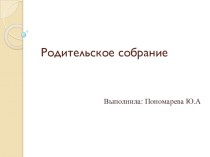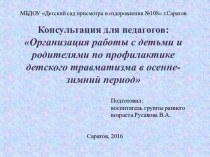- Главная
- Разное
- Бизнес и предпринимательство
- Образование
- Развлечения
- Государство
- Спорт
- Графика
- Культурология
- Еда и кулинария
- Лингвистика
- Религиоведение
- Черчение
- Физкультура
- ИЗО
- Психология
- Социология
- Английский язык
- Астрономия
- Алгебра
- Биология
- География
- Геометрия
- Детские презентации
- Информатика
- История
- Литература
- Маркетинг
- Математика
- Медицина
- Менеджмент
- Музыка
- МХК
- Немецкий язык
- ОБЖ
- Обществознание
- Окружающий мир
- Педагогика
- Русский язык
- Технология
- Физика
- Философия
- Химия
- Шаблоны, картинки для презентаций
- Экология
- Экономика
- Юриспруденция
Что такое findslide.org?
FindSlide.org - это сайт презентаций, докладов, шаблонов в формате PowerPoint.
Обратная связь
Email: Нажмите что бы посмотреть
Презентация на тему Self-determination theory
Содержание
- 2. Self-Determination Theory First publication in 1985 - Deci and Ryan Natural tendency to growthBasic needs
- 3. Self-Determination Theory
- 4. Self-Determination Theorycontrolledautonomous
- 5. Theories based on SDTCognitive Evaluation Theory (CET) concerns intrinsic
- 6. Self-determination theory and work motivationfocus of SDT
- 7. Self-determination theory and work motivationPositive correlations with intrinsic and identified regulationNegative correlations with amotivation
- 8. Self-determination theory and work motivationPositive correlations with
- 9. What Makes Lawyers Happy?: A Data Driven Prescription to Redefine Professional Success
- 10. How to measure? The Multidimensional Work Motivation Scale
- 11. Thank you for attention!
- 12. Скачать презентацию
- 13. Похожие презентации
Self-Determination Theory First publication in 1985 - Deci and Ryan Natural tendency to growthBasic needs
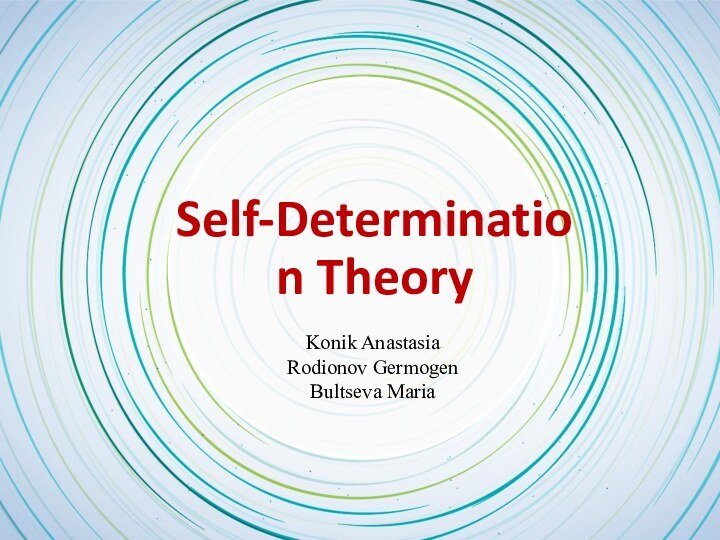
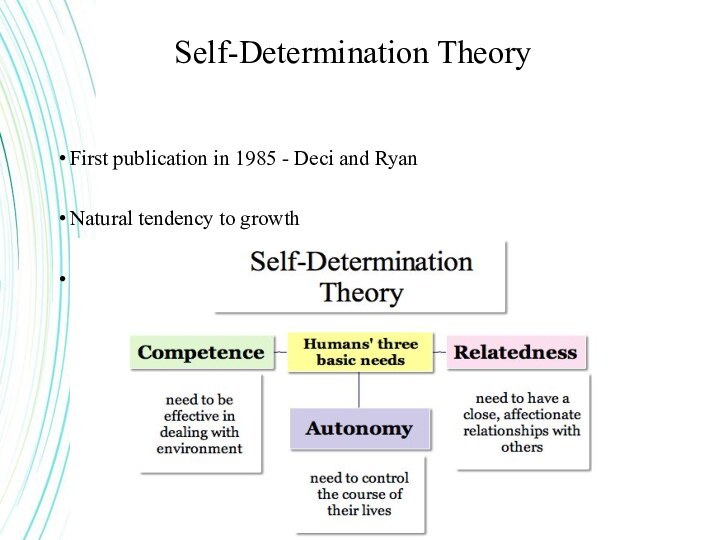
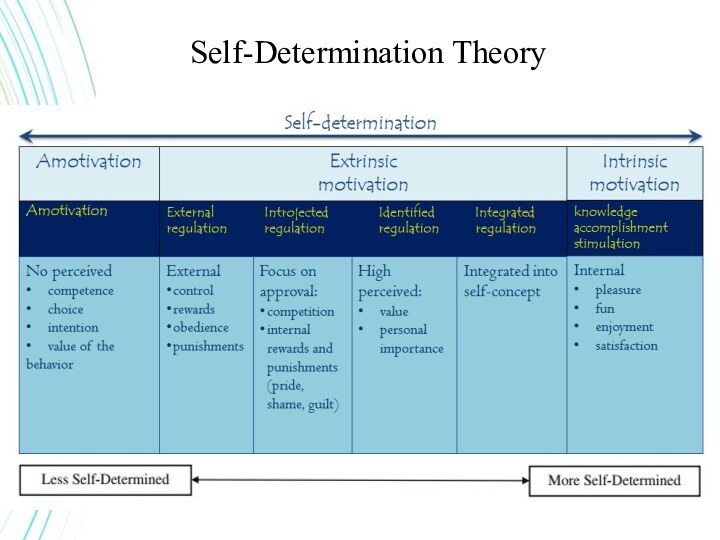

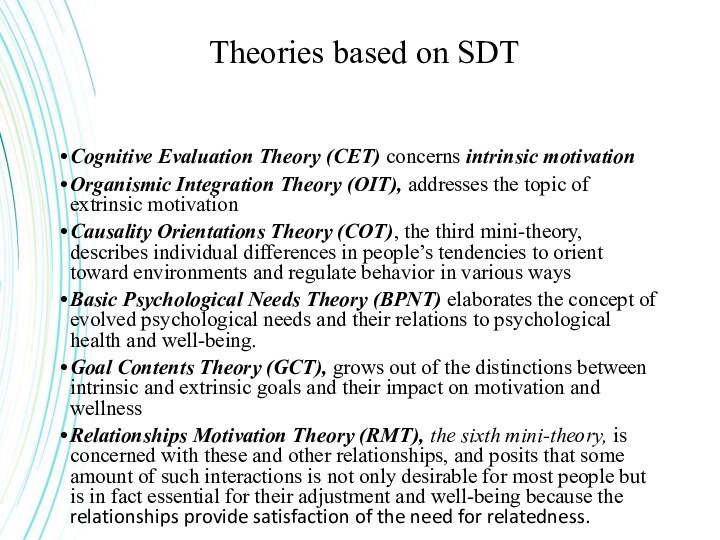
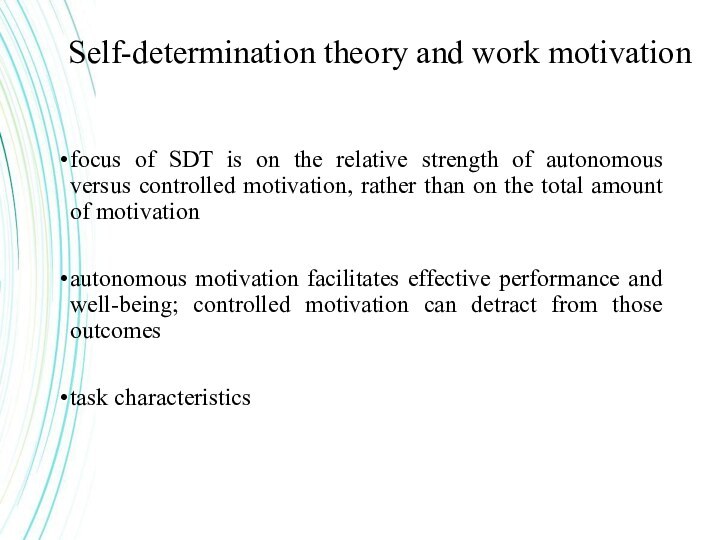

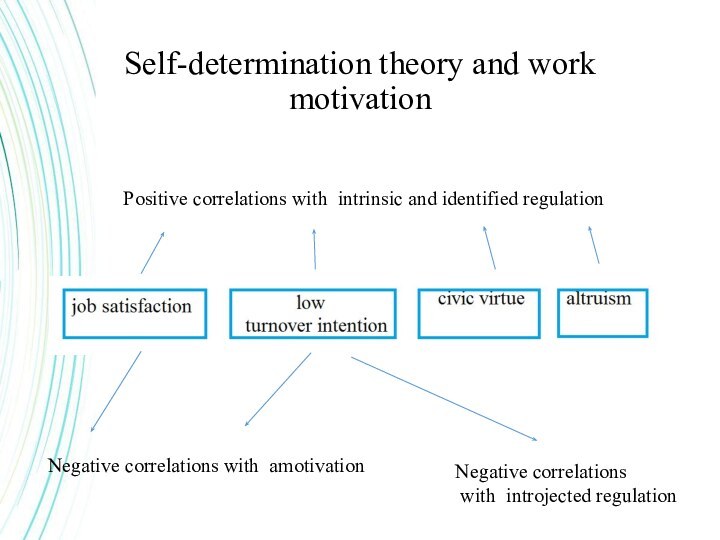
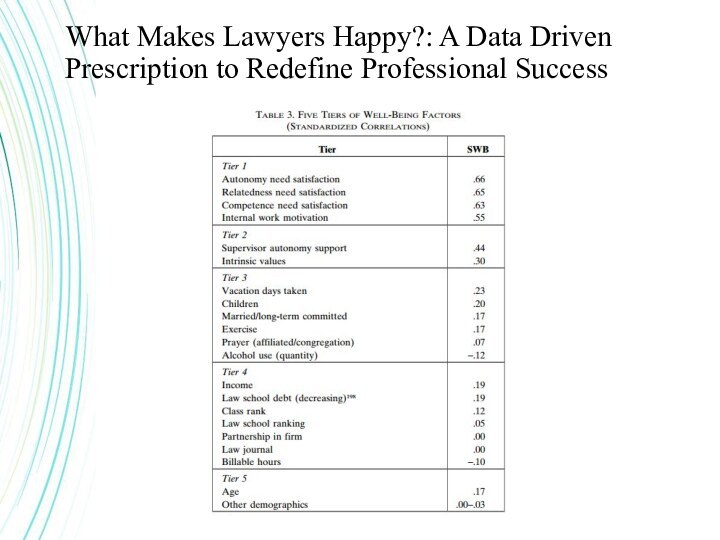
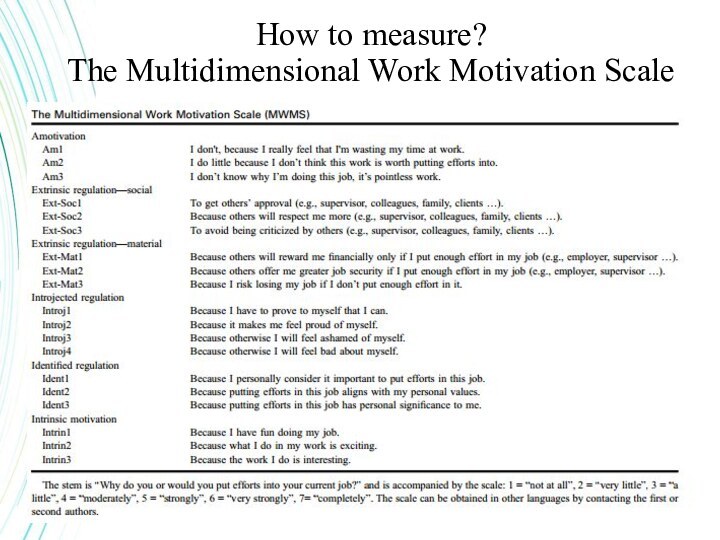

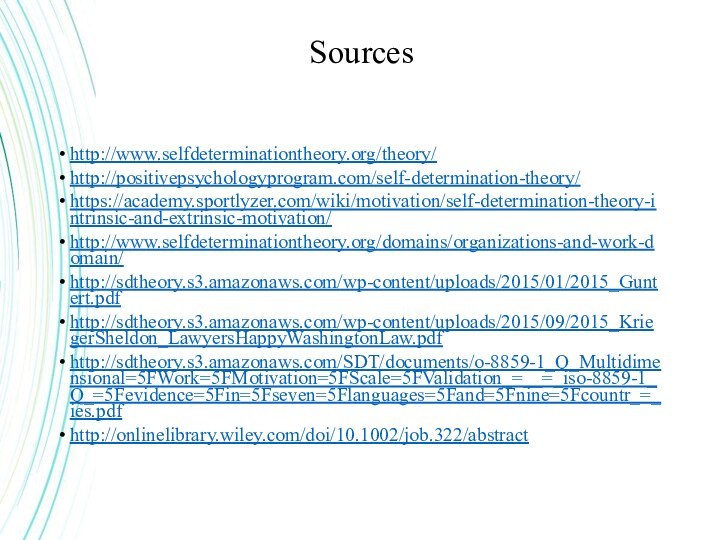
Слайд 5
Theories based on SDT
Cognitive Evaluation Theory (CET) concerns intrinsic motivation
Organismic
Integration Theory (OIT), addresses the topic of extrinsic motivation
Causality Orientations
Theory (COT), the third mini-theory, describes individual differences in people’s tendencies to orient toward environments and regulate behavior in various waysBasic Psychological Needs Theory (BPNT) elaborates the concept of evolved psychological needs and their relations to psychological health and well-being.
Goal Contents Theory (GCT), grows out of the distinctions between intrinsic and extrinsic goals and their impact on motivation and wellness
Relationships Motivation Theory (RMT), the sixth mini-theory, is concerned with these and other relationships, and posits that some amount of such interactions is not only desirable for most people but is in fact essential for their adjustment and well-being because the relationships provide satisfaction of the need for relatedness.
Слайд 6
Self-determination theory and work motivation
focus of SDT is
on the relative strength of autonomous versus controlled motivation,
rather than on the total amount of motivationautonomous motivation facilitates effective performance and well-being; controlled motivation can detract from those outcomes
task characteristics













